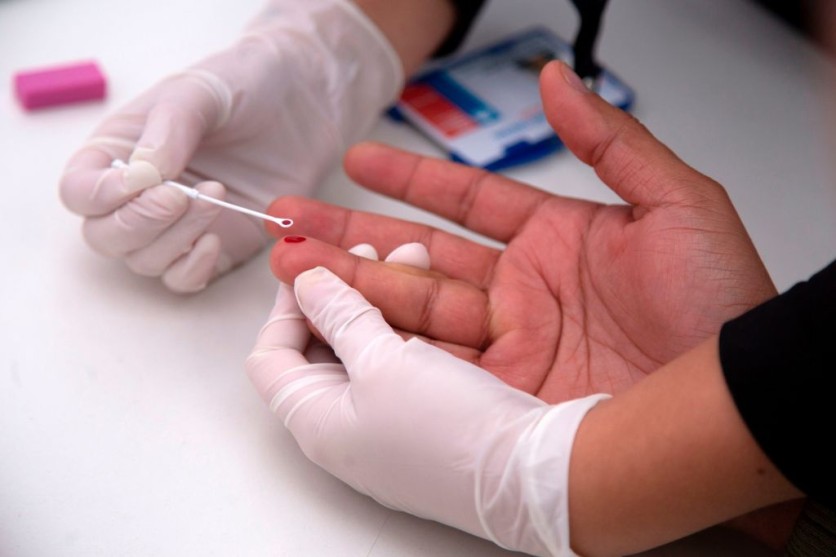A minuscule motion on the surface of HIV might hold the key to significant progress in AIDS vaccine development.

A man undergoes a rapid VIH test during the Gay Pride Parade in Santiago on June 23, 2018. - The initiative aims to encourage prevention, as there is concern about the alarming increase of new HIV infections (Acquired Immunodeficiency Virus) in the country.
Promising Clue for AIDS Vaccine Development
Researchers at the Duke Human Vaccine Institute (DHVI) have identified a rapid opening of a tiny part on the virus's surface, which could serve as a vital clue for generating antibodies to combat AIDS.
If scientists manage to impede this swift movement in the envelope glycoprotein, it could represent a groundbreaking advancement in the quest for an AIDS vaccine.
The envelope glycoprotein is integral for the virus to attach to a T-cell receptor, and its dynamic behavior has been scrutinized by researchers due to its crucial role in the infection process, showcasing rapid movements lasting mere millionths of a second.
The complexity lies in the continual movement of this viral component, a tactic employed by the virus to evade the immune system. However, scientists are actively developing strategies to pinpoint and target this elusive element, aiming for the creation of a more potent and effective vaccine.
When HIV seeks to attach to a human T-cell, a crucial white blood cell responsible for identifying and attacking virus-infected cells, it initially seizes the cell's CD4 receptor, explained Ashley Bennett, a postdoctoral researcher and co-author of the study.
Rory Henderson, the lead author of the study and an associate professor of medicine at DHVI, highlighted that previous efforts to stabilize the virus structure were hindered by the newfound understanding of its dynamic movement.
Interesting Engineering reported that Henderson clarified that the challenges faced in stabilization were not due to mistakes in prior attempts but rather a result of insufficient knowledge about the virus's intricate behavior.
The CD4 receptor, a protein on the surface of immune cells, including T-cells, serves as a docking site for the human immunodeficiency virus (HIV), the cause of AIDS.
This connection triggers the virus's envelope structure to open up, exposing a vital binding site necessary for infecting the cell. The researchers identified this process as crucial for the virus to penetrate the cell.
Once both components of the virus adhere to the cell, it can introduce its genetic material, leading to a permanent infection.
Addressing Setbacks
Fighting this type of virus poses a significant challenge because it is a retrovirus, making it difficult to eliminate once infected.
The researchers identified a moving part of the virus that shields a sensitive binding site. This mobile element functions like a latch, preventing the virus from opening until it's prepared. The use of a specific antibody to keep this latch closed could potentially thwart the infection.
Underlining the significance of the latch system in vaccine development, Henderson pointed out that a crucial question has revolved around understanding why immunization often leads to the generation of antibodies targeting areas that are meant to be blocked.
Analyzing the interplay between antibody binding and the virus's shape has been a critical aspect of their work, explained Henderson. He emphasized that this understanding led them to design an immunogen immediately after the initial experiment, indicating confidence in their comprehension of the process.
To examine the various states of the virus, researchers utilized an electron accelerator at the Argonne National Laboratory, which produces X-rays capable of visualizing extremely minute entities, even down to a single atom.
Given the expensive nature of the equipment and its shared usage among multiple researchers, the Duke team faced time constraints, necessitating intensive sessions to gather as much data as possible, as published in Science Advances.
Related Article : Vaginal Rings That Can Provide Protection Against HIV to Be Produced by a South African Company

ⓒ 2025 TECHTIMES.com All rights reserved. Do not reproduce without permission.




